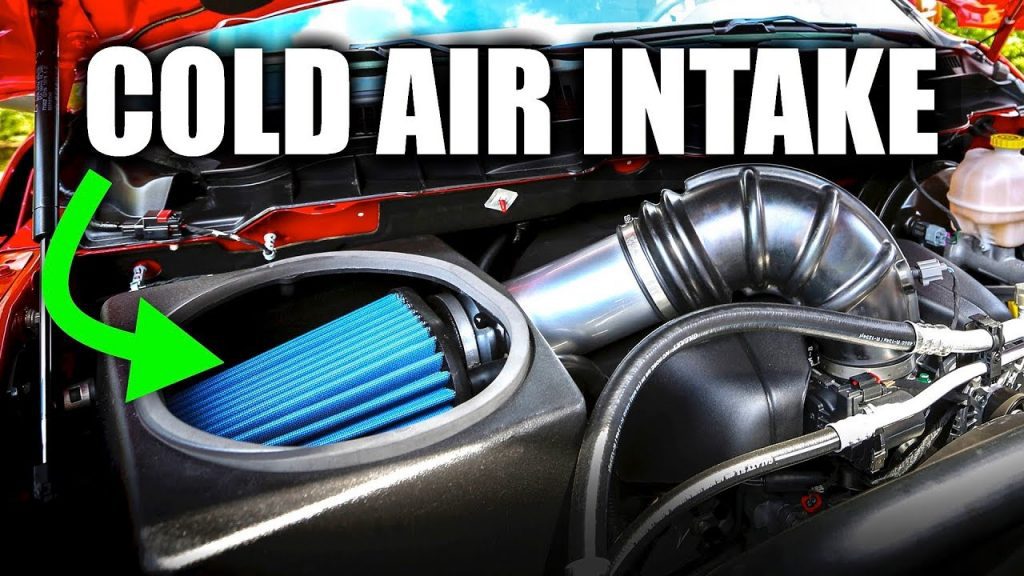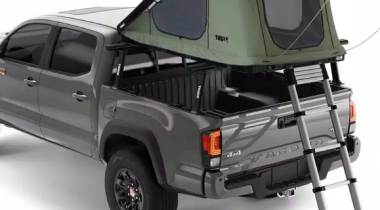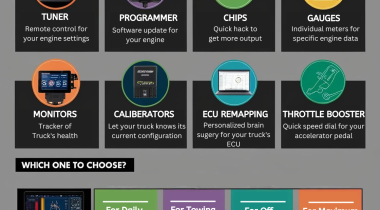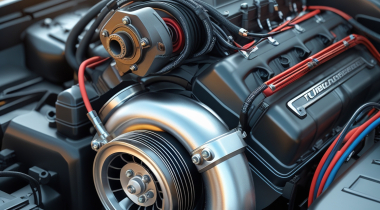Cold Air Intake Buying Guide: Choosing the Right CAI

How to Choose the Right Cold Air Intake: A Comprehensive Buying Guide
If you’re looking to upgrade your vehicle’s performance, installing a cold air intake (CAI) is a great place to start. A cold air intake can increase horsepower, improve acceleration, and even improve fuel efficiency.
However, with so many options on the market, it can be difficult to know where to start when selecting the right cold air intake for your vehicle.
In this complete buying guide for choosing the best cold air intake, we’ll cover everything you need to know about cold air intakes, including how they work, the different types available, and the key factors to consider when making your purchase.
Whether you’re a seasoned car enthusiast or just starting to explore the world of performance upgrades, this guide will help you make an informed decision and get the most out of your vehicle.
Choose from Right Purchasing Guide for Best Cold Air intake
What is Cold Air intake System (CAI)?
Let’s start by understanding the function of air intake systems.
Cold air intakes play a crucial role in enhancing the performance of a vehicle. While this may be common knowledge, it is important to understand how they work.
A cold air intake system facilitates better combustion by increasing the quantity of colder air that is drawn into the engine. Traditional air intake systems have various flow restrictions, such as tubes, bends, and turns, which gradually slow down the incoming air, causing more resistance, increased temperature, and a reduced amount of oxygen to be delivered to the combustion chamber. As a result, the fuel-rich air/fuel mixture may not ignite properly, leading to a decline in performance over time.
However, a cold air intake system eliminates these restrictions and allows for the intake of colder air or a greater volume of oxygen, thereby maximizing combustion in the engine and increasing the performance of the vehicle.
Explore more on Cold Air Intake System : See Best Cold Air intakes for all trucks
Benefits of Using Cold Air Intake
In this section of Cold air intake buying guide, we will explore the benefits of installing a cold air intake in your vehicle. Let’s dive in!
#1 Power/Hp Gain :
A significant advantage of installing a cold air intake in your vehicle is the increase in power or horsepower. When more air or oxygen is available for combustion, the engine is able to create a more efficient fuel-to-air ratio, which leads to improved ignition of the fuel-rich air/fuel mixture. This, in turn, results in increased power output or horsepower for your vehicle.
The reason behind this is that colder air is denser than warmer air, and denser air contains more oxygen. By drawing in colder air from outside the engine bay, the cold air intake system provides the engine with a higher concentration of oxygen, which is necessary for the combustion process.
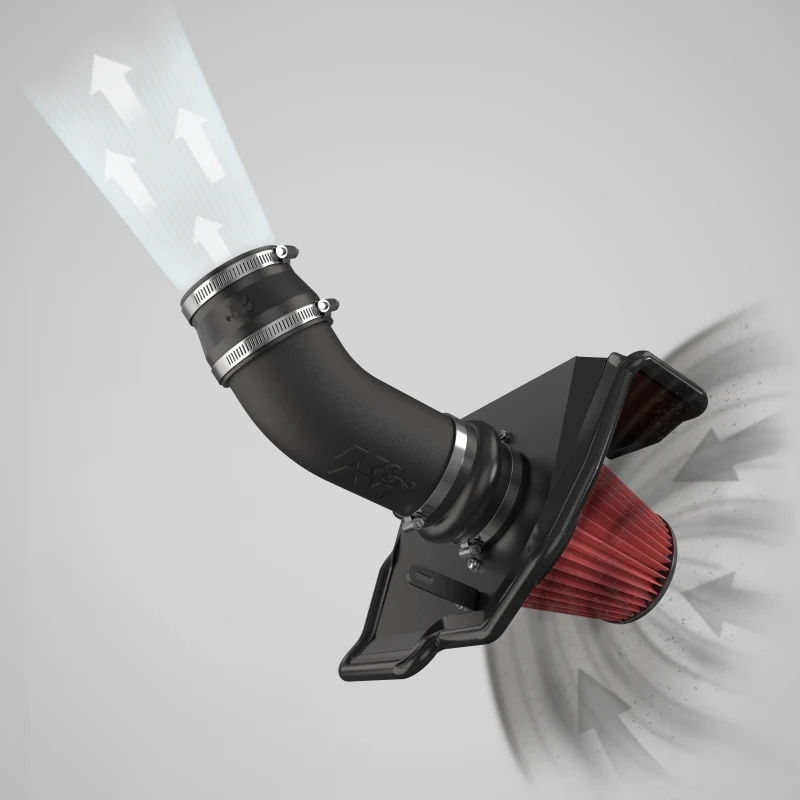
When the engine is able to receive more oxygen, the fuel is burned more efficiently, leading to a more powerful combustion stroke. This, in turn, increases the power output of the engine, resulting in a noticeable improvement in horsepower.
It is important to note that the exact amount of horsepower gained will depend on various factors such as the type of vehicle, engine size, and the quality of the cold air intake system installed. However, it is generally accepted that installing a cold air intake will provide some noticeable increase in horsepower, making it a popular upgrade for car enthusiasts and anyone looking to improve their vehicle’s performance.
#2 Increased Throttle Response :
An additional benefit of installing a cold air intake in your vehicle is the increase in throttle response. Over time, it is not uncommon for vehicles to experience a decrease in performance, particularly during tough terrain or when accelerating from a stop. However, by improving air flow and combustion within the engine, a cold air intake can significantly improve throttle response.
When you press down on the gas pedal, the throttle body opens up to allow air into the engine. With a cold air intake, the engine is able to receive a greater amount of cooler and denser air, which contains more oxygen. This increased supply of oxygen allows for more efficient combustion, resulting in a quicker response from the engine when the gas pedal is pressed.
In addition, a cold air intake system also reduces the restriction on airflow that is often present in factory-installed air intake systems. This means that the engine can receive a greater volume of air with less effort, resulting in quicker and more responsive acceleration.
#3 Boosted Mileage or Fuel economy : By using performance cold air intake you are basically increasing your gas mileage. As better oxygen level means better combustion and rick fuel/air mixture will burn properly and you get more energy out of every drop of fuel hence increasing mileage.
You will see 1-2 Miles per gallon increase in your mileage but along with this you have to maintain your driving habits also as in if you’re driving hard using extra power and acceleration that will surely not lead to increase in mileage. So be cautious about that.
#4 Increase Engine Life:
One often overlooked benefit of installing a cold air intake in your vehicle is the potential increase in engine life. By improving combustion efficiency and allowing for the intake of colder, cleaner air, a cold air intake can help to reduce the amount of contaminants that accumulate within the engine, leading to a longer lifespan.
When the engine receives a greater supply of oxygen and air, it is able to burn fuel more efficiently, which reduces the amount of unburned fuel that can accumulate within the engine. Unburned fuel can lead to the buildup of harmful contaminants, which can cause damage to the engine over time.
In addition, the cold air intake system is typically designed to be more effective at filtering out contaminants than the factory-installed air intake system. This means that the engine is able to receive a cleaner air supply, which further reduces the potential for contaminants to accumulate and cause damage.
By reducing the amount of contaminants that build up within the engine, a cold air intake can help to extend the lifespan of your engine. This is particularly important for those who rely heavily on their vehicle or who drive in dusty or dirty environments.
#5 Easy Installation : The best part of Performance Air Intake is that they’re very easy to install with simple tools and installation instructions. If you’re totally new then mechanic help is recommended otherwise you can install by seeing videos or reading installation manual also.
After knowing all of the benefits lets look into some of the things to consider before buying cold Air Intake.
Things to Consider before Buying Cold Air Intake
In this section of Cold air intake buying guide, we will explore the best factors to consider when buying cold air intake for your vehicle. Let’s dive in!
#1 Choosing the Right Filter:
When considering purchasing a cold air intake, it is crucial to carefully evaluate the quality of the air filter that comes with it. The air filter is a critical component of the cold air intake system, as it is responsible for preventing contaminants from entering the engine and potentially causing damage.
Ideally, you want to look for a high-quality air filter that is both reusable and washable. This will not only save you money over time, as you won’t need to constantly replace the filter, but also help to ensure that your engine is receiving a clean air supply.
Reusable filters are typically made from high-quality materials that are able to withstand repeated washing and reuse. This is not only better for the environment, but can also help to improve the overall efficiency and performance of your vehicle. Washable filters are also easier to maintain and keep clean, as you can simply rinse them off and reuse them, rather than having to purchase a new filter each time.
When evaluating the quality of a cold air intake filter, it is also important to consider the filter’s filtration efficiency. Look for a filter that is able to capture a high percentage of contaminants, such as dirt, dust, and debris, while still allowing for optimal airflow.
Overall, investing in a high-quality, reusable, and washable air filter as part of your cold air intake system can help to ensure that your engine receives a clean and efficient air supply, while also saving you money over time.
#2 Choosing the correct Size of Cold Air intake to maximize performance
Selecting the correct size of a cold air intake system for your truck is crucial for ensuring optimal performance and avoiding any potential issues or compromises. It is important to carefully consider the available space in your engine compartment and other relevant details when making your decision.
Choosing the right size cold air intake system can impact your vehicle’s performance and overall efficiency. A system that is too small may not provide sufficient airflow, while a system that is too large may not fit properly or may cause other issues.
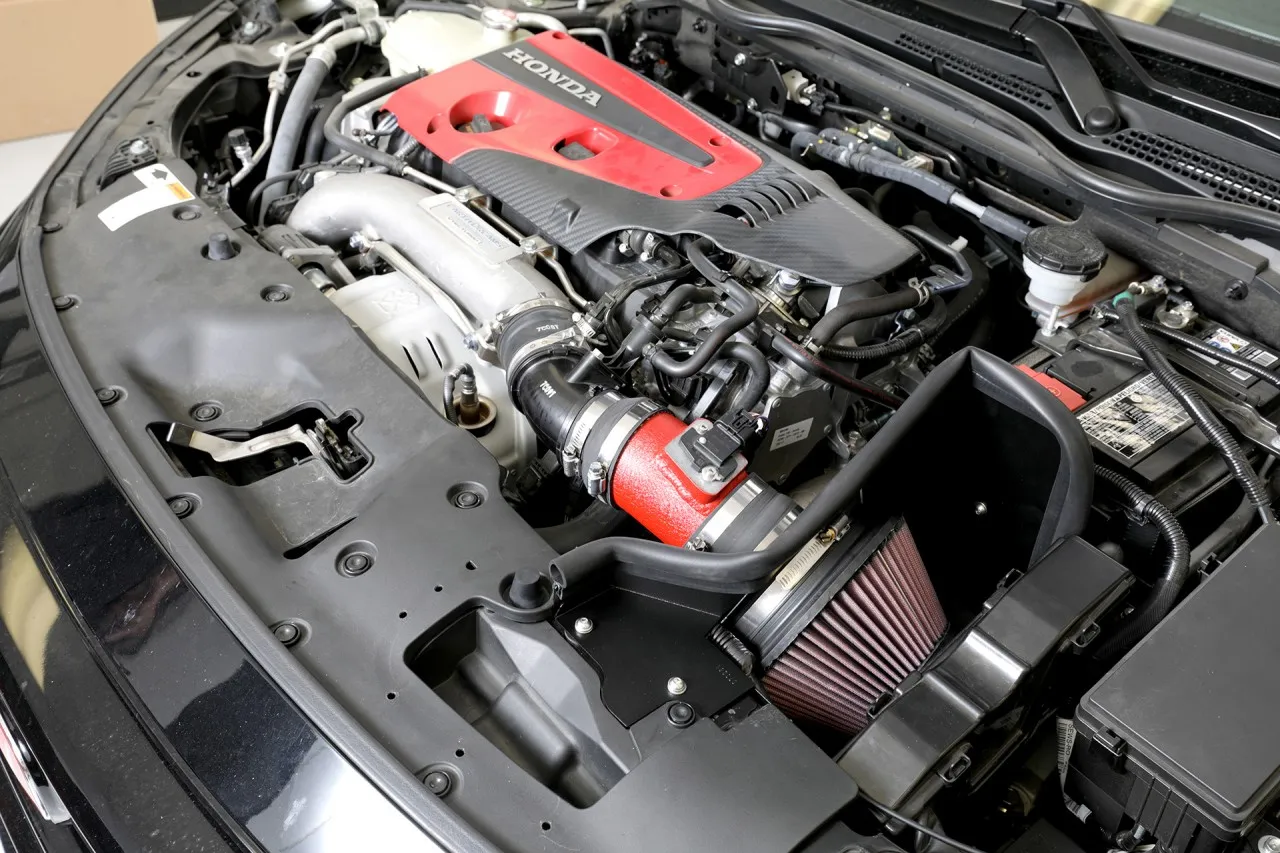
To select the appropriate size cold air intake system for your truck, start by examining the available space in your engine compartment. This will give you an idea of the maximum dimensions that your cold air intake system can have.
Next, look at the specifications provided by the manufacturer of the cold air intake system you are considering. This should include information such as the diameter and length of the intake tube, as well as the size of the air filter.
Consider factors such as the angle and placement of the intake tube, as well as the location of any obstacles or other components that may affect the fit or performance of the system.
By carefully evaluating these factors and selecting a cold air intake system that fits properly and provides optimal airflow, you can ensure that you enjoy all of the benefits of improved performance and efficiency that a high-quality cold air intake system can offer.
#3 Durability Material and Construction
The durability of a cold air intake system is an important consideration when selecting a system for your vehicle. It is essential to carefully evaluate the material composition of the system and choose a high-quality, durable product that will last for a long time.
When evaluating the material of a cold air intake system, look for products that are made from high-quality materials, such as durable plastics, aluminum, or other strong metals. These materials are more resistant to wear and tear and are less likely to crack or break over time.

You should also consider the overall design and construction of the cold air intake system. A system that is designed with sturdy brackets and reinforced connectors will be less prone to damage from vibration or other external factors, which can help to extend the lifespan of the system.
In addition to the high quality material. and construction of the system, you should also consider the warranty and customer support offered by the manufacturer. A manufacturer that offers a strong warranty and responsive customer support can help to ensure that any issues with the system are quickly and efficiently addressed.
#4 Price:
When considering the price of a cold air intake system, it is important to balance the cost with the quality and performance of the product. While it may be tempting to opt for the cheapest option available, it is crucial to avoid compromising on quality in order to save a few dollars.
A high-quality cold air intake system may cost more upfront, but it will ultimately provide better performance, durability, and longevity. By investing in a quality product, you can save money in the long run by avoiding costly repairs and replacements down the road.

It is also important to consider the potential savings that a high-quality cold air intake system can provide indirectly, such as through improved fuel efficiency. A system that provides better airflow and combustion can help to optimize fuel mileage and reduce overall costs associated with vehicle operation.
When comparing prices for different cold air intake systems, be sure to take into account the quality, features, and performance of each product, as well as any additional benefits or savings that may be associated with a higher-end product.
#5 Style of Cold air intake :
The other thing to think about is the style or type of cold air intake system. There are generally Four types : the short ram system , Ram Air intake , Air Box Intake and the true cold air intake system.

Short RAM Intake VS True Cold Air Intake
- Short ram system: The short ram is basically replace your factory intake with a new smooth pipe and an open element air filter .It draws air from inside the engine bay but give a short, smooth path to the engine.It is easy to install and cheaper than cold air intake.Since it takes place as your factory pipe so it allows for engine heat to have an easier path into your intake system, creating less horsepower and torque as compared to cold air intake. Its design tends to require less “plumbing” or fabrication work.
- True cold air intake: Whereas Cold Air intake or The “true” cold air intake places an emphasis on moving the air filter as far forward as possible. It draws air from outside the engine bay to give engine cooler and denser air. It produces more supplemental cold air flow than the short ram design. Due to the intake having more piping, the cold air is usually more expensive, and more difficult to install.
- Ram Air Intake: The Ram Air Intake is pretty much similar like cold air intake only the difference is – it comes with longer tubes and air filter at the back of system. This is more beneficial during high speeds as it draws larger volume of air with wind pressure which results in more engine power.It is somewhat like turbocharger but with less parts.
- Air Box Intake: This style of intake is designed to enclose the air filter in a sealed box, often with a duct that draws in air from outside the engine bay. Air box intakes can provide better performance gains than open filter designs, but may be more expensive and harder to install.
Overall, the best style of cold air intake for your vehicle will depend on your specific needs and driving style. It is important to research different styles and brands of cold air intakes to find the one that best fits your vehicle and budget.
It’s depend upon you which air intake you want to buy, if you’re ready to spend money and want noticeable performance and horsepower increase then Cold Air intake is best.On the other side if you don’t want to spend much and want good economy increase along with better throttle response then you should go with Short ram intake.
Ultimately, the best cold air intake for your vehicle will depend on your specific needs and budget. It is important to research different brands and styles of cold air intakes, and to choose one that provides the best combination of performance, durability, and value for your vehicle. By carefully considering these factors, you can find the best cold air intake to help improve the performance and longevity of your vehicle.
What are the Indicators of Bad or faulty CAI?
In this section of Cold air intake buying guide, we will explore the indicators of bad or faulty cold air intake.
These are the three symptoms or indicators that will alert you that your Cold Air intake in not functioning properly.

Bad or Faulty Air intake
1.Reduction in Engine Performance
A common sign that may indicate an issue with your cold air intake is a reduction in power, acceleration, and fuel efficiency. This can often be caused by a clogged or dirty air filter, which can accumulate over time.
Additionally, you may experience difficulty starting your vehicle or notice that the engine is not running as smoothly as it once did. These symptoms may suggest that there is a problem with your cold air intake system that needs to be addressed in order to maintain optimal engine performance.
2. Excessively High Idle
Another indicator that there may be an issue with your cold air intake system is an excessively high idle. While a faulty cold air intake is not always the cause of a high idle, it can be a potential factor.
One possible cause of high idle in this case is a vacuum leak. Many cold air intake systems include vacuum ports that are designed to work with the original vacuum routing of the vehicle.
If the hoses or ports on these systems break or become damaged, it can result in a vacuum leak and cause the engine to idle at a higher than normal RPM. If you notice a high idle or other symptoms of a vacuum leak, it is important to have your cold air intake system inspected by a qualified mechanic to determine the underlying cause of the problem.
3. Check Engine Lights
The sensors that are installed in the cold air intake system are designed to detect any issues and can set off the engine light if a problem is detected. This is an indication that something may be wrong with the cold air intake, such as a vacuum leak or a faulty sensor.
If the engine light comes on, you can use an engine light reader to check for any error codes that may be stored. The sensors in the intake system are specifically designed to detect problems and alert you to potential issues before they become serious.
If you notice the engine light coming on, it is important to have your cold air intake system inspected by a qualified mechanic to determine the underlying cause of the problem and to address any issues before they cause further damage.
Expert tips for long life of CAI
Here are some expert tips and important things to consider for longer life of Cold Air intake. Here we mentioned only the names to Read full tips >> Click Here
- Timely Maintenance : Always do regular checks and inspection and keep your air filters clean for longer life.
- Check for any Water Intake (or Ingestion) : Check for Any water ingestion in you Air intake system . Entering of water in intake system will lead to engine failure
- Which one to Choose Dry or Oil Filter – Choose between the two according to your driving conditions.
- Keep the Air Box Cooler and Increase its efficiency Using Heat Shield – use thermal barrier for better efficiency of intake system
- CARB Approval – Your intake system must be CARB Approved.
Cold Air Intake Buying Guide – FAQs
Q.What is cold Air Intake?
Ans. A Cold air intake kit is replacement or aftermarket part that is designed to provide the engine with greater capacity of cooler air. Cold Air intake provides improved combustion rate by drawing in colder air. There are many flow restrictions by means of tubes, bends and turns that basically slower down the incoming air for combustion with time. More restrictions mean more resistance and temperature and less air or oxygen delivered to combustion chamber causing a poor ignition of fuel rich air/fuel mixture. This leads to decrease in performance with time.
Cold air Intake system is designed to free up those restrictions and drawing in colder air or more oxygen and maximizing combustion in your engine and hence increasing performance of your truck.
Q. Why Cold Air Intake is important for the engine?
Ans. Cold Air intake draws in cold and denser air to the engine which has high concentration of oxygen. This means better combustion and less fuel is needed to create the spark and run the engine which leads to better horsepower, torque and fuel economy. Moreover, it increases the efficiency of the engine also. In this Buying guide for Cold air intake we have covered detailed benefits for CAI.
Q. Does cold Air intake make any difference in performance?
Ans. Yes, Cold Air Intake do make a difference in performance. Some manufacture claims as much as 20-30 HP increase. But you will easily get 15-20 increase in horsepower and noticeable economy increase. And, if you’re using other modifications also like better performance exhaust, Tuners or suspension then you will create a much more efficient system.
Q. How often should I replace my cold air intake filter?
Ans. It depends upon the type of air filter you’re using. If you’re using Oiled filter that is re-usable and will last longer than the dry filter. So, it depends upon your cold air intake system.
Q. How many types of Cold Air intakes are there And Which is better cold air intake or Short Ram?
Ans.There are generally three types : the short ram system , Ram Air intake and the true cold air intake system.There is a 4th one also that we’ve covered in this cold air intake buying guide above.
Short ram system: The short ram is basically replace your factory intake with a new smooth pipe and an open element air filter .It is easy to install and cheaper than cold air intake.Since it takes place as your factory pipe so it allows for engine heat to have an easier path into your intake system, creating less horsepower and torque as compared to cold air intake. Its design tends to require less “plumbing” or fabrication work.
True cold air intake: Whereas Cold Air intake or The “true” cold air intake places an emphasis on moving the air filter as far forward as possible. It draws air from outside the engine bay to give engine cooler and denser air. It produces more supplemental cold air flow than the short ram design. Due to the intake having more piping, the cold air is usually more expensive, and more difficult to install.
Ram Air Intake: The Ram Air Intake is pretty much similar like cold air intake only the difference is – it comes with longer tubes and air filter at the back of system. This is more beneficial during high speeds as it draws larger volume of air with wind pressure which results in more engine power. It is somewhat like turbocharger but with less parts.
It’s depend upon you which air intake you want to buy, as from the name Short Ram intake provides short path which results in better throttle response. Moreover, it draws air from inside the engine bay which is much warmer and better for complete combustion of fuel which means short ram intakes gives better gas mileage also than cold air intake.
Whereas on the other hand Cold Air intake draws in cold and denser air that means more oxygen available for combustion which leads to more power. On the other hand, sometimes Short Ram intake gets issue like its intake pipe gets heated up due to engine heat- for that you need heat shield installed in the Short Ram Intake.
Q. Does a cold air intake damage your engine?
Ans. There is a bigger concern with air intake to your vehicle – that is hydrolocking or hydrolock. It is the condition in which engine takes in water instead of air, causing engine damage. As water gets trapped in the cylinder of the engine and it doesn’t compress also which can ruin the pistons and cause connecting rods to bend and damage the engine. But this is very rare case nowadays.
This have happened in past but now it’s very rare thing to happen as now the cold air intake comes with air bypass valve installed in the middle of the cold air intake. The high pressure of bypass valve would not allow water to engine your engine. The other option is you can choose short ram intake, so there is no option for hydro-lock.
We recommend if you’re living in area where the raining is very common than you should choose short ram intake.
Q. How Much a good cold air intake cost?
Ans. Changing from your vehicle’s intake system to Cold Air Intake system will cost around $150 to $550, depending upon the system. The cost is worth it actually , as you will save on fuel and your engine will get more power and better working.
Q. Why my cold intake pipe becomes very hot or what is heat Soak?
Ans. If your intake pipe is becoming hot very frequently then this is condition of heat soak in which the intake pipe itself heats up and it also increase the temperature of air going into your engine, decreasing engine performance. This is the issue usually with low grade air intakes. A good intake system is made from material such as aluminium that doesn’t allow the piping to get hot enough to effect performance.
Q. Does you need any tune with a cold air Intake?
Ans. Cold Air intake itself is best option to get more power and better mileage. Whereas if you want more advanced modifications then you should go with Tuners or Programmers, performance Exhausts, Suspensions and in trucks tonneau covers for better overall efficiency.
Q. Why some air intakes are cheaper than the others? If this really makes any difference?
Ans. First of all it totally depends upon your budget and system, which one you have to choose. But choosing cheaper one does not gives you that performance like the normal air intake. The cheaper air intakes usually come with simple design with a pipe and cheap filter and there is no testing for proper air/fuel mixing resulting in poor performance whereas the best Air intake comes with proper design and testing that mix air and fuel in proper ratio for better combustion and efficiency.
Conclusion for Complete best buying guide for Cold air intake
In conclusion, a Cold Air Intake is a great upgrade for your truck, improving horsepower, acceleration, and fuel economy while providing better throttle response and engine life.
Before purchasing a Cold Air Intake, there are various factors that you need to consider such as size, material, filter quality, durability, price, and brand.
Make sure to choose the right size according to your truck’s engine space, evaluate the quality of the filter, and choose a durable and high-quality material. Also, ensure that the price is reasonable, and don’t compromise on quality for a cheap price.
Pay attention to the indicators like a dirty filter, excessively high idle, or check engine light, which can alert you of any problems with the Cold Air Intake. A well-maintained and well-chosen Cold Air Intake can significantly improve your truck’s performance, providing you with a better driving experience.
We hope you enjoyed the article Complete Buying guide for Cold Air intake system to its entire bits.
We do hope that this article helped you in making a definitive choice when it comes to choosing an Best Air Intakes for your Dodge Ram 1500 that boosted the flow rate and hence increases the performance level.
If you have any query Feel free to add you thoughts in the comment section below.

Vicky Dwaj, Founder and CEO of TrucksEnthusiasts , is an automobile engineer passionate about pickup trucks and accessories. Follow his journey to discover the latest trends in off-road accessories, cars, and truck parts.


